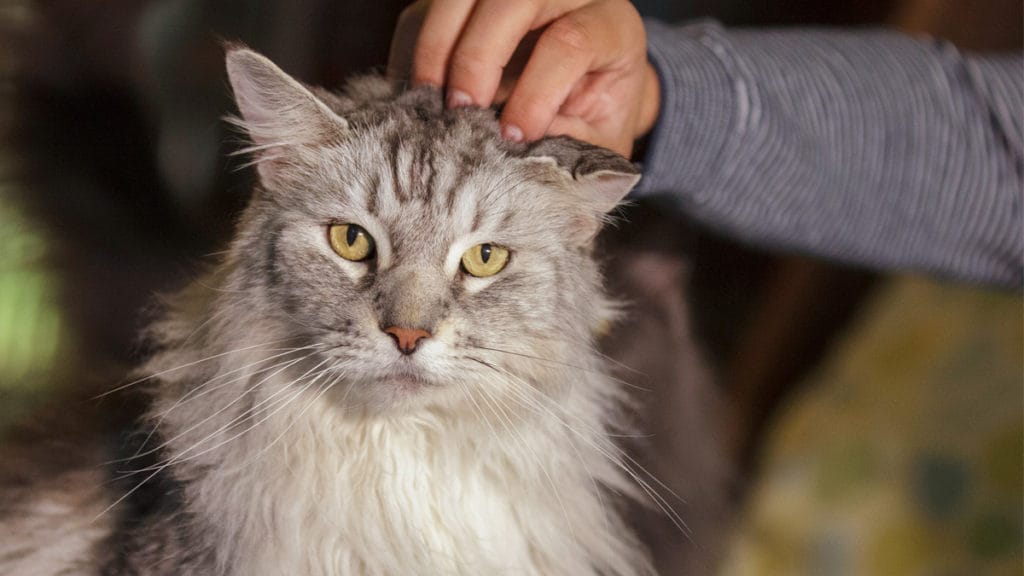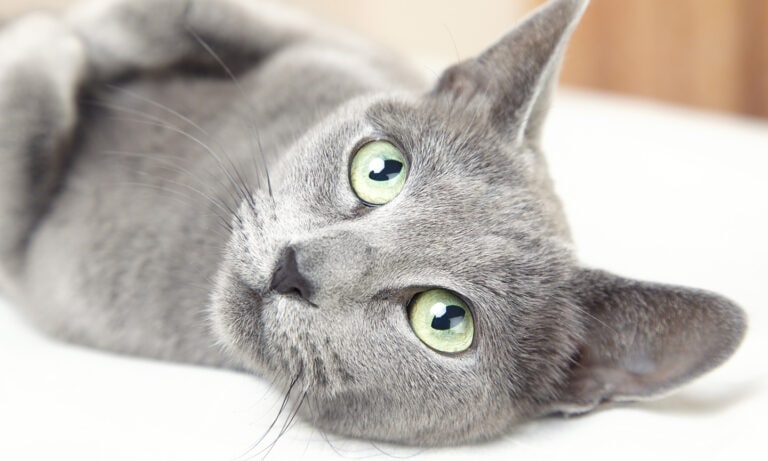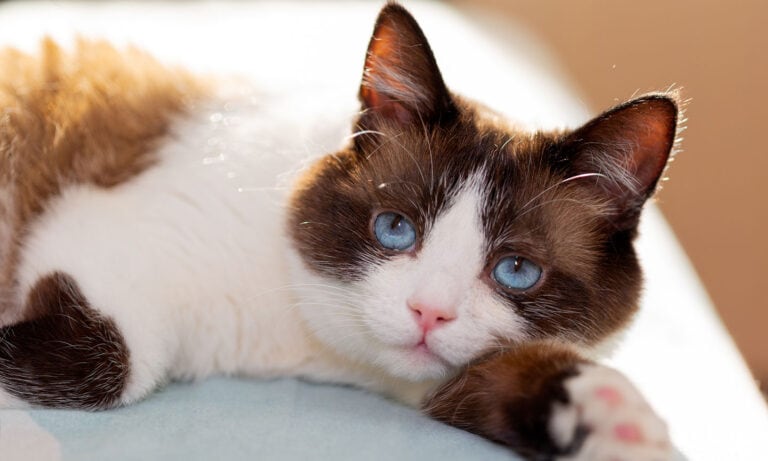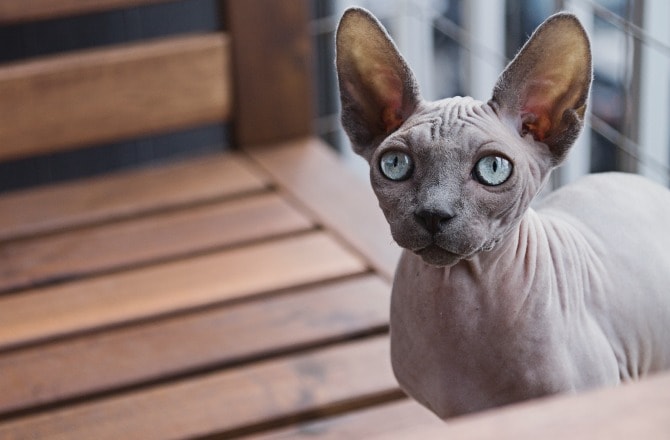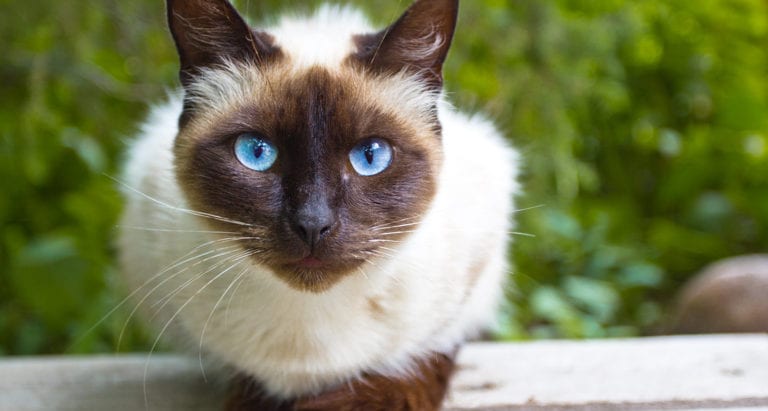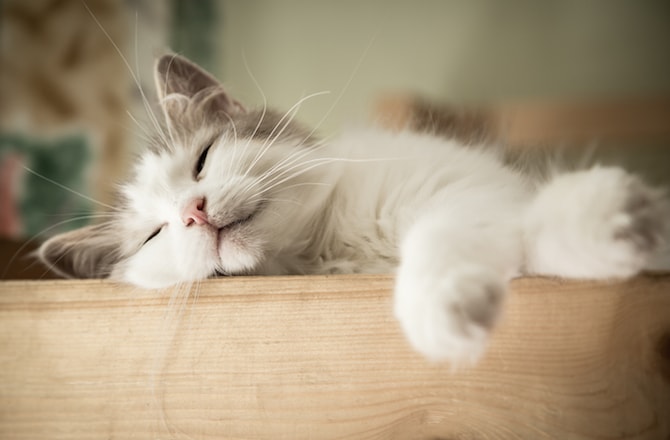Cat parents know why felines make great pets. For starters, they’re intelligent, graceful, loving and arguably the best cuddle buddies a pet parent can have.
If you are a cat lover, you will be thrilled to know that there are particularly large cat breeds that offer more to love than your standard kitty. These big house cats are joining the ranks of the most popular types of cats due to their temperaments and adorably large stature.
They have a growing reputation for being more people-centric, affectionate and incredibly smart when it comes to learning tricks and following commands. Just keep in mind that predicting the personality of any individual cat based on breed characteristics is not always accurate. “Reputations are based on generalizations, and any particular cat… may or may not conform to that reputation,” cautions Mikel Maria Delgado, PhD, Postdoctoral Fellow in Animal Behavior at UC Davis School of Veterinary Medicine. “Cats are individuals, and genetics and environment all play a role in a cat’s personality and behavior.” The research on cat genetics in regards to relationship to personality is very limited. Unlike dogs, “Traditionally, cats have been bred for looks, not behavior, although it is possible that some personality traits came along for the ride,” notes Delgado.
5 Types of Large Cat Breeds
Thinking about adding a supersized sweetie to your family? Then here’s what you’ll want to know about each of these large cat breeds. Average weights noted are for males; females will typically be lighter. And it takes time to grow into all this grandeur; all of these breeds need 3-5 years to reach their full size. Here are some stats on the top 5 large cat breeds:
-
Maine Coon
The Maine Coon is the biggest domestic cat—and it’s as lovable as it is large. Actually, the world’s biggest cat according to Guinness World Records, as far as length goes, is Ludo, a Maine Coon in the U.K., who measures 3 feet, 10.6 inches long.
Their physical stature (15-25 pounds is not uncommon), coupled with their lush coat, front ruff and the trademark tufts at the ears and between the toes, makes them stunning specimens, indeed. These are people-focused, affable cats. They’re great with children and generally easy-going with other cats and dogs. For such an imposing figure, they have a surprisingly meek meow, and will often “trill” instead.
Royal Canin offers a cat food designed to meet the needs of the Maine Coon cat. Their Maine Coon Formula is specially formulated to keep a Maine Coon’s coat lustrous and their joints strong. The larger size kibble encourages Maine Coons to chew their food, which is beneficial because they have a tendency to swallow without properly chewing their food.
-
Ragdoll
Another big beauty is the Ragdoll cat, the ultimate lap cat. These darlings like to cuddle so much that they often just flop into your arms. Children usually adore them—as true to their moniker— and they make eager playmates. As endearing as a Ragdoll’s super laid-back, quiet demeanor is to many, it might not be the perfect choice for those dreaming of a really active, talkative housemate.
Ranging between 15-20 pounds, Ragdolls have blue eyes and pointed markings (much like a Siamese). The Ragdoll’s coat is plush, rather like a rabbit’s, and despite its posh appearance, requires twice-weekly combing. During shedding season (usually spring and fall, depending on where you live) be sure to get under the armpits, as that’s where tangles can show up.
-
Norwegian Forest Cat
This kitty tips the scale, weighing about 12-16 pounds. The Norwegian Forest Cat is an intelligent, lively cat who enjoys interaction with his family. They typically love playing with anyone nearby.
The cat’s lush coat is actually water-resistant, with a dense undercoat that kept these kitties warm during the cold Scandinavian winters. In the summer, the coat will be shorter, but it will still keep the water-repellent texture. Their coat doesn’t require the daily grooming, though, that other long-haired breeds do. Just make sure to comb a bit more in the spring, when that summer coat starts to come in.
Between the relatively low maintenance and energetic personality, a Norwegian Forest Cat is a great choice for busy, active families. Just be aware that the muscular body that made them good mousers also makes them agile climbers!
-
Savannah
Among the variety of large cat breeds, the long and lean Savannahs are exotic beauties. They’re hybrids of a domestic cat and an African serval, which is a 30-50 pound wild cat. It’s carefully bred to keep the exotic look of a serval at a smaller size—around 15-18 pounds—along with domestic cat behavior traits. According to Guinness World Records, the world’s biggest cat based on height is a statuesque Savannah; Arcturus of Michigan is just over 19 inches tall.
These are fast-moving, curious and determined creatures, able to jump 8 feet in a single bound, opening doors with lever handles, and even flushing toilets. They also tend to enjoy water. More than a few Savannah cat parents report being joined in the shower or bath by their pet! While they are affectionate—often sleeping at the foot of a bed, giving loving head butts and enjoying a petting session—nobody would call them a lap cat. They have high energy levels and tend to dislike being picked up or held.
While the rewards of making a Savannah part of your family are many, prospective parents should consider whether they have the space, time and patience for such a large and active cat. “Hybrids are less domesticated, in a sense, and so we should expect that their behavior needs might exceed those of your average domestic cat,” says Delgado. Also, while Savannahs are classified as domestic cats by the USDA and The International Cat Association (TICA), some states or counties require permits for hybrids, and a few outlaw them. So it’s important to research your local ordinances before falling in love with one.
-
Siberian
This is one warm-hearted big house cat that originated in a cold place—Russia. According to TICA, the Siberian is 17-25 pounds of sturdy strength, especially in their hindquarters, making them excellent jumpers. Despite their hardy facade, these are gentle cats; they’re also exceptionally clever. They’re known to be charmingly chatty, with a rich purr, and they “talk” with more of a chirp than a meow. Similar to the Norwegian Forest Cat, the Siberian’s winter coat is thick and layered, which protected its ancestors from the elements; in the summer they get a shorter and finer, but still silky, coat. Weekly brushing should suffice.
Basic Care for Your Large Breed Cat
Just remember, even fully indoor cats need a flea preventative, and big house cats need the right amount. A cat flea preventative meant for an average size cat won’t work for your big baby! Consider Advantage II Flea Treatment for Large Cats. And speaking of adjusting for size, bigger cats will need bigger litter boxes, reminds Delgado. One option is Petmate’s Large Cat Litter Pan.
Adopting a Large Breed Cat
Whichever large cat breed you decide is the one for you (thorough research, using a resource like The Complete Cat Breed Book, is key), adopting can be a great idea. “The popularity of these larger breeds leads to lots of unethical ‘backyard breeding’ by people who are looking to make a quick buck on a fancy cat,” says Delgado. “I worked in rescue for many years, and there are many lovely cats of all breeds who need good homes. And every now and then, a purebred would end up available for adoption at the shelter. Furthermore, there are rescue groups that specialize in purebred cats who have lost their homes, so purchasing from a breeder is not the only option for those who want a particular breed.”

Christina Vercelletto is a pet, travel and lifestyle content specialist and a former editor of Parenting, Scholastic Parent & Child, and Woman’s Day. She lives on Long Island with her Chiweenie, Pickles, and 20-pound Calico, Chub-Chub.
Share:
